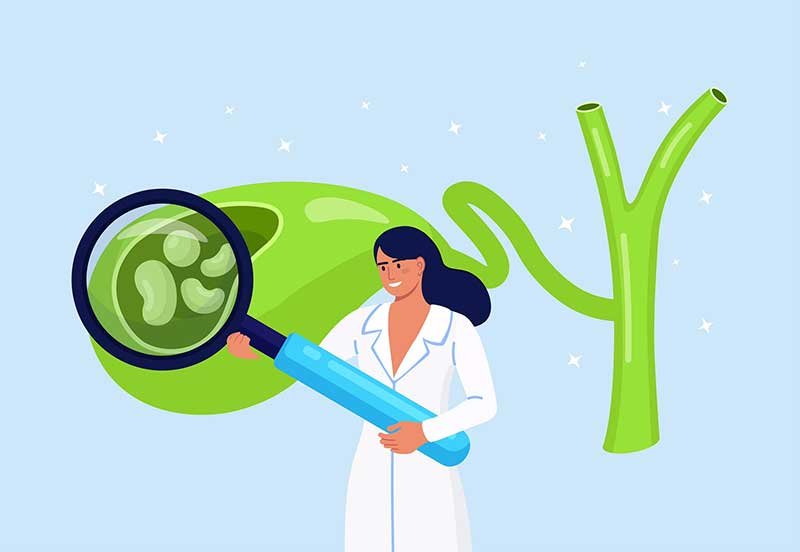
Gallstones are stones formed due to various reasons within the gall bladder whose major function is to store a digestive secretion called bile. There are different varieties of stones depending on their chemical composition however they are grossly categorized as pigmented and non-pigmented galls stones. Grossly speaking, gallstones are either due to factors that increase cholesterol in the bile or due to reasons which increases bilirubin levels. Apart from the generic reasons like unhealthy diet, obesity, hereditary factors and smoking, there are a lot of pre-hepatic, post-hepatic and hepatic causes for the formation of stones within gallbladder one of the commonest being women on hormonal treatment.
Symptoms of Gallstones:
- Intense pain in the upper abdomen (right hypochondriac region).
- Nausea
- Vomiting
- indigestion
- Diarrhoea
- Darker coloured faeces and urine
Complications of untreated gallstones:
- Jaundice
- Pancreatitis
- Acute cholecystitis
- Acute cholangitis
- Carcinoma gallbladder
Dealing with gallstones, a summary.
If the above-mentioned symptoms were encountered and should you decide to seek medical help, the attending doctor will start with relevant history, do thorough examination which will be followed by blood investigations and imaging techniques that the doctor feels appropriate.
- complete blood count
- liver function tests
- Lipid profile
imaging techniques may include,
- Abdominal Ultrasound,
- EUS (endoscopic ultrasound),
- Oral Cholecystography,
- Hepatobiliary Iminodiacetic acid (HIDA) scan,
- Computerized Tomography (CT),
- Magnetic Resonance Cholangiopancreatography (MRCP)
There are non-invasive treatments, Surgical treatment both open and minimally invasive procedures available for gallstones.
Shock wave therapy (where shock waves are used to break the stones down into finer pieces), ERCP (Endoscopic retrograde cholangiopancreatography) maybe done to remove stones. These are some of the popular non-invasive techniques available.
Laparoscopic Cholecystectomy: using four small incisions in your abdomen, a tube and a video camera sending images to a video monitor. The surgeon removes the gallbladder. Later these small incisions are sutured. This takes about 1-2 hours.
You have to undergo the tests as prescribed by the doctor to evaluate the type, size, and location of the gallstone for surgery. Laparoscopic cholecystectomy may not be advisable for all patients, it is for the treating surgeon to decide whether the patient should undergo laparoscopic or open. Get checked and get treated at the earliest. If you are looking for professional medical help, then look no further. Book an appointment with our doctors at OneHealth hospital to know more and to discuss your treatment options.
Author






